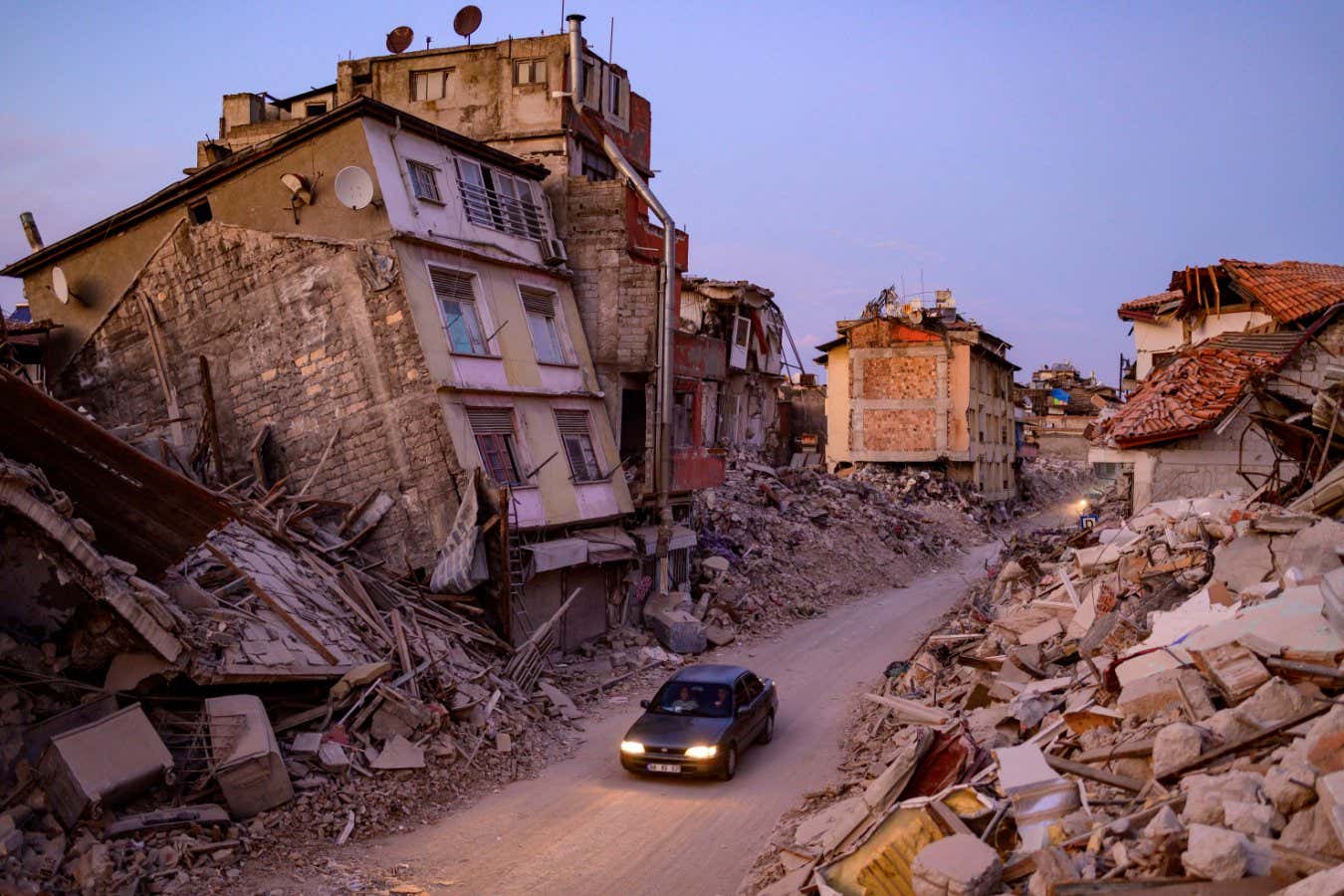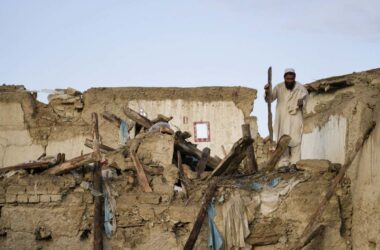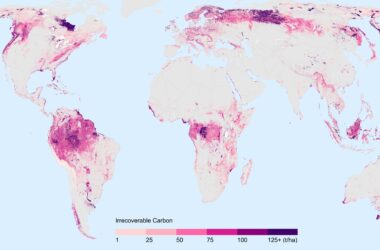Collapsed buildings in Antakya, Turkey, on 20 February, following a 7.8-magnitude earthquake
YASIN AKGUL/AFP/Getty Images
Introduction
Earthquakes have long been one of the most unpredictable natural disasters, wreaking havoc and causing loss of life and property. The ability to predict earthquakes even a few hours in advance could be a groundbreaking advancement, potentially saving numerous lives. Recently, a study conducted by Quentin Bletery and Jean-Mathieu Nocquet from Côte d’Azur University in Nice, France, has provided some promising insights into the potential predictability of earthquakes up to two hours before they strike.
Unveiling Pre-Earthquake Activity
For years, experts have debated whether there are any discernible signs of seismic activity prior to earthquakes or if they are entirely random events. Bletery and Nocquet’s study utilized GPS data to investigate this matter further. They focused on detecting gradual, increasing slips between tectonic plates, which were previously too small to be detected by seismographs but could potentially serve as warning signs before earthquakes occur.
Previous studies have attempted to detect these slips, but they were limited in scope, either producing warning signs observed before earthquakes or not yielding any earthquake predictions at all.
The Study’s Approach
Bletery and Nocquet gathered GPS measurements with incredible accuracy—1 centimeter precision—over the 48 hours leading up to 90 different earthquakes. By comparing the recorded ground movements with the expected direction of movement during an earthquake, they were able to identify the largest movement just before the earthquake.
Moreover, the researchers noticed a gradual increase in movement in the expected direction during the final 23 data points, with the last seven measurements exceeding any others during the entire 48-hour period.
The Potential Earthquake Detector
The gradual and slow slip between tectonic plates, starting approximately two hours before earthquakes, could potentially serve as a reliable earthquake detector. This study suggests that if such slips can be consistently identified, they may provide valuable lead time for earthquake preparedness and response.
Challenges and Limitations
While the findings seem promising, Roland Bürgmann from the University of California, Berkeley, emphasizes the need for further research to validate the proposed signals as reliable earthquake precursors. It is important to note that there have been previous observations of various earthquake precursors, such as foreshocks and deformation, but these observations are not unique. Bürgmann views Bletery and Nocquet’s two-hour precursor study as promising since it examines multiple earthquakes, but more research is necessary to corroborate their findings.
Conclusion
Predicting earthquakes has been a challenge for scientists and researchers for a long time. The recent study conducted by Quentin Bletery and Jean-Mathieu Nocquet suggests that earthquakes might be predictable up to two hours in advance by detecting gradual slips between tectonic plates using GPS data. While the research shows promise, further studies and validation are needed to establish these signals as reliable earthquake precursors.
FAQs
- Is earthquake prediction currently possible? While there have been advancements in seismology, accurate earthquake prediction remains a complex challenge due to the unpredictable nature of seismic events.
- What are some current methods of earthquake prediction? Scientists currently rely on seismic monitoring, historical patterns, and statistical probabilities to assess earthquake risks.
- Can GPS technology be used for earthquake prediction in real-time? GPS technology has the potential to offer real-time data, but significant advancements in precision and sensitivity are required.
- What role does technology play in earthquake prediction? Technological advancements, such as improved seismographs and satellite monitoring, contribute to better understanding seismic activities and potential prediction methods.
- How can the general public prepare for earthquakes? The general public should be educated about earthquake safety measures, have emergency plans in place, and be aware of building codes to mitigate risks.








